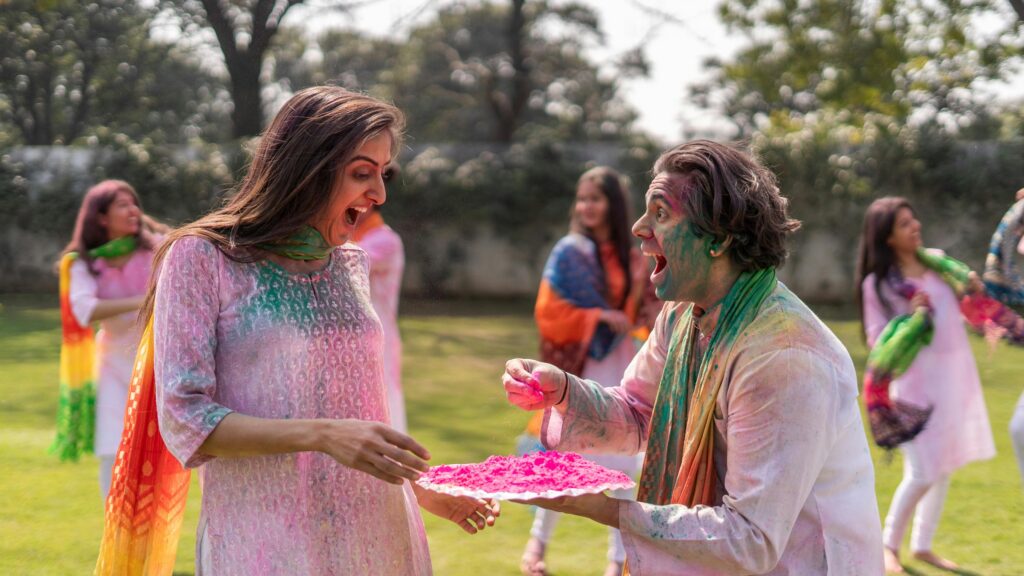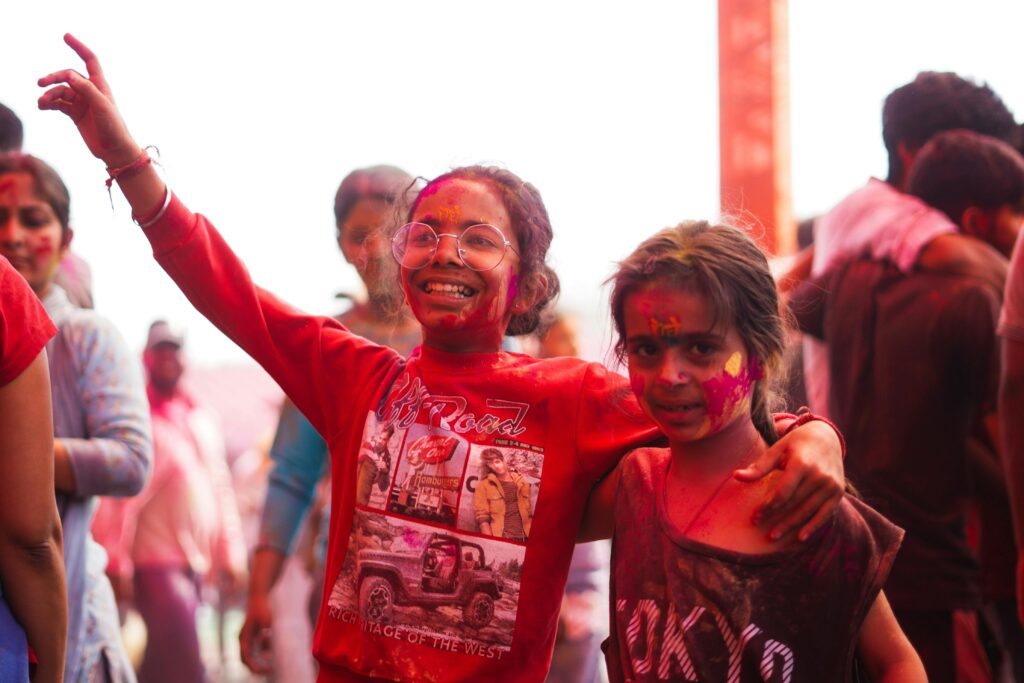Holi Festival






Holi, one of India’s most vibrant and widely celebrated festivals, transcends religious and cultural boundaries, symbolizing the triumph of good over evil, the arrival of spring, and the essence of love and unity. Known as the “Festival of Colors,” Holi is celebrated with unparalleled enthusiasm across India and by Indian communities worldwide. The festival typically falls in the month of Phalguna (February-March), marking the end of winter and the advent of a new agricultural season.
Historical and Mythological Significance
The Festival has deep roots in Indian mythology, with the most popular legend being that of Prahlada and Holika. According to the story, Prahlada, a devout devotee of Lord Vishnu, defied his father, King Hiranyakashipu, who demanded that everyone worship him instead. Enraged by his son’s devotion to Vishnu, Hiranyakashipu conspired with his sister Holika to kill Prahlada. Holika, who was immune to fire, sat in a blazing pyre with Prahlada on her lap. However, due to her evil intentions, Holika burned, while Prahlada emerged unharmed, protected by his unwavering faith. This tale symbolizes the victory of good over evil and is commemorated by lighting bonfires on the eve of Holi, known as Holika Dahan.
Another legend associated with Holi is that of Lord Krishna and Radha. It is said that young Krishna, known for his playful nature, was conscious of his dark complexion and envious of Radha’s fair skin. Upon his mother Yashoda’s suggestion, Krishna playfully applied colors on Radha’s face, symbolizing their eternal bond and breaking societal norms of beauty and equality. This aspect of festival highlights love, inclusivity, and acceptance.
The Celebration of Holi
Rangwali is a two-day festival, with Holika Dahan on the first evening and the main celebration of colors on the second day, known as Rangwali Holi.
Holika Dahan:
On the evening before Holi, people gather around large bonfires to perform rituals that symbolize the burning of negativity and the renewal of positive energy. Offerings such as coconut, grains, and flowers are made to the fire while participants chant prayers for prosperity and health.Rangwali :
The following day is a riot of colors, music, and dance. People smear each other with vibrant powders, known as gulal, and drench one another with colored water using water guns and balloons. The atmosphere is joyous and carefree, with traditional Rangwali songs adding to the festive fervor. Communities come together to celebrate, breaking social barriers and fostering harmony.
Regional Variations
The Festival celebrations vary across India, reflecting the country’s cultural diversity:
- Mathura and Vrindavan: The birthplace of Lord Krishna hosts grand Rangwali festivities, including Lathmar Holi, where women playfully beat men with sticks, re-enacting Krishna and Radha’s playful interactions.
- Shantiniketan (West Bengal): Inspired by poet Rabindranath Tagore, Holi here, known as Basanta Utsav, emphasizes cultural performances, songs, and dances.
- Punjab: Known as Hola Mohalla, Sikhs celebrate with martial arts displays, mock battles, and vibrant parades.
- South India: In Tamil Nadu, Holi is associated with the legend of Kamadeva, the god of love, who is said to have been resurrected by Lord Shiva.
Symbolism and Spirituality
Holi is more than a festival , it is a metaphor for life’s diversity and beauty. The vibrant hues represent various emotions and experiences, reminding participants of the impermanence of material things and the importance of living in the moment. The act of smearing colors signifies breaking free from societal norms and embracing each other with equality and openness.
Culinary Delights
Holi is incomplete without its delectable treats. Traditional sweets like gujiya (a pastry filled with sweetened khoya and nuts), malpua, and thandai (a spiced, milk-based drink often laced with bhang) are integral to the celebrations. Savory items such as dahi bhalla and papri chaat add to the festive feast.
Global Appeal
The joy of Holi has transcended borders, gaining popularity in countries like the United States, United Kingdom, Australia, and others. Cultural festivals inspired by Holi are organized in many cities, promoting Indian heritage and encouraging cultural exchange.
Holi’s Message in Modern Times
In today’s fast-paced and often divided world, This Festival serves as a powerful reminder of the importance of togetherness, forgiveness, and joy. The festival encourages people to let go of grudges, rebuild relationships, and revel in the beauty of unity amidst diversity. It’s a celebration of life’s vibrant colors and a testament to the enduring spirit of Indian culture.
Holi, with its profound significance, joyous traditions, and unifying spirit, continues to be a cherished celebration, spreading happiness, love, and positivity across generations and geographies.

